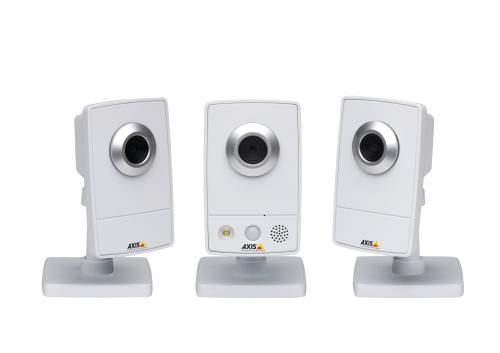In the first part of the wireless IP camera setup conversation it was noted that because of their easy, quick, and cost-friendly set-up, wireless ip cameras allow fast deployment for immediate or emergency needs.
Wireless IP cameras enable mobility. Using them in a parking lot, for example, is cheaper than running cables through the ground.
And while popular in the home and small offices, wireless IP cameras have a slower adoption rate in the corporate setting because of network security concerns and reliable wirless signals – topics that I’ll be touching on in this post.
Wireless Signals – Frequency
Regulatory bodies manage radio frequencies. Some are licensed by the FCC, others are free to use with no approval.
Most wireless local area networks (WLAN) are based on the IEEE 802.11 standard that operates in a license-free spectrum. So, there are no fees to set up and operate your wireless network.
Wireless Signals – Strength
Wireless signals work best through open air but can go through wood and concrete. Wireless signals reflect off of metal so a building with a lot of metal will have difficulties. Metals with high conductivity such as copper are virtually impenetrable.
A quick note about antenna’s – The better the antenna, the longer the range of the wireless connection.
And a reminder – Wireless networks replace cables but power is still required at both ends.
WLAN Security
It’s possible for anyone within range of a WLAN to intercept the data and attack your network. Security is very important to prevent unauthorized access and to guard against that there are a couple of options:
- Wired Equivalent Privacy (WEP): Prevents people without the correct key from accessing the network but, WEP is no longer considered to provide adequate security.
- WiFi Protected Access (WPA/WPA2): Takes care of WEP shortcomings by implementing a standard way for distributing encrypted keys.
WLAN Security Recommendations
- Enable user/passwork login for camera access
- Enable the HTTPS encryption in the wireless router/cameras – do this before the keys or credentials are set for the WLAN to prevent stolen credentials
- Be sure your wireless camera supports security protocols such as IEEE 802.1X and WPA/WPA2
Wireless Bridge
Technologies other than the prevailing IEEE 802.11 standard are microwave and laser that increase performance and distance plus have very high security to connect buildings or sites with a point-to-point high speed data link.
Next up I’ll discuss wireless bandwidth, distance & number of cameras, and wireless Vs wired networks.


[email protected]
Good review about the surveillance for security purposes and at the same time it is wireless so it can be putted in much higher ground than the usual CCTV now.